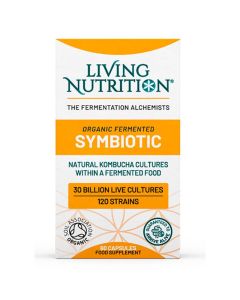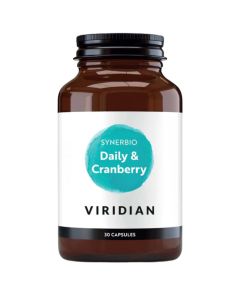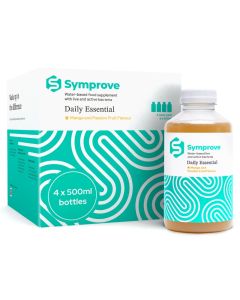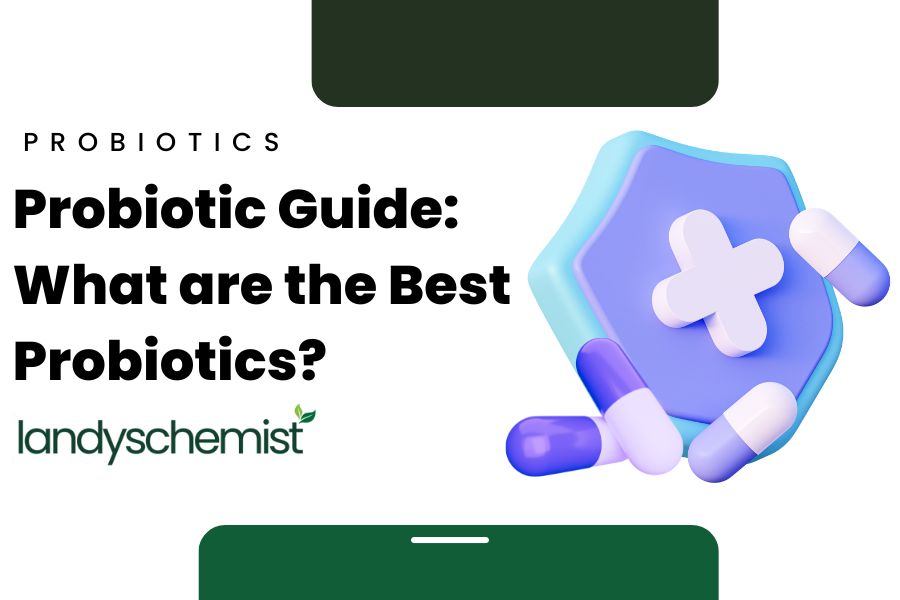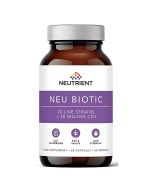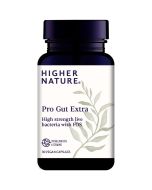
Probiotics | Advice, Guidance and Best Supplements
What is a probiotic?
A probiotic is a bacteria that typically is found living in gut system. They exist in virtually all living creatures, from humans to dogs to dolphins!
Probiotics are often referred to as “friendly bacteria”. The collection of all the different types of bacteria, fungi and other microorganisms that exist inside humans is known as the “Microflora” or “Microbiome”. Having a healthy microbiome can result in good digestive health but also in good sleep, immunity, skin and a range of other key elements to healthy living.
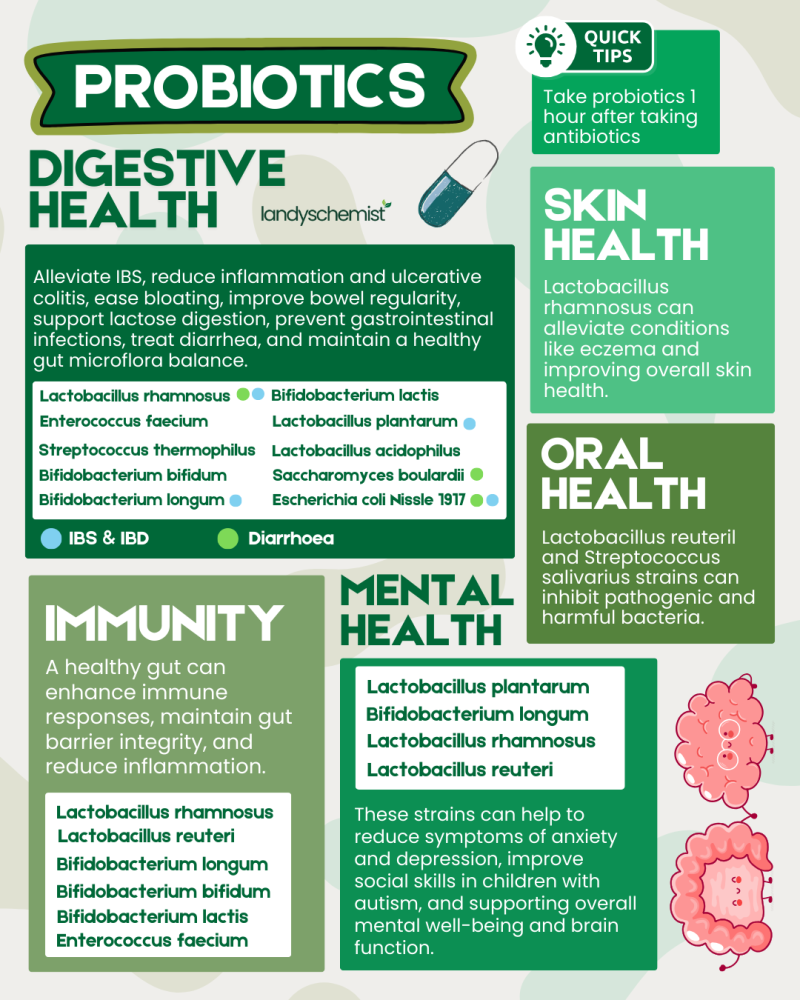
Why should you take a probiotic?
Probiotics are competing in your body for food and space with bad bacteria. Bad bacteria, like pathogens, cause illnesses, constipation, diarrhoea and a huge range of other issues.
By taking a probiotic on a regular basis you maximise the chances that your food gets consumed by the good bacteria in your gut rather than the bad because there are simply more of them present.
One of the other huge benefits of probiotics is that as they colonise more and more of the gut they multiply to create new and different bacteria. This means that even taking a probiotic with five or six strains of bacteria can in turn lead to a huge range of new bacteria forming in the gut. Probiotics also produce short-chain fatty acids which serve to lower the pH level in the gut. This has the benefit of making the overall environment more favourable for probiotics and less favourable for harmful bacteria. In other words, taking a probiotic consistently increases the chances of the probiotic working in the gut effectively.
Probiotics have been linked to the behaviour of children, how much babies cry, sleep quality, mood and so many other parts of life that it is impossible to overstate how important it is to take them regularly.
Can you get probiotics naturally?
Yes you can. The only problem is that you often don’t get particularly high doses or you don’t get a range of bacterial strains. Here are some examples of ways to naturally get probiotics and the approximate number of bacteria present.
- Yoghurt – It depends on many factors but these can sometimes contain billions of bacteria. In some cases they are fortified with additional bacteria too.
- Kefir – This is a drink which is a bit like yoghurt – it can contain as many as 10-20bn bacteria per dose.
- Kombucha – A tea like drink which has recently grown in popularity. It can contain billions of bacteria.
- Sauerkraut – Fermented cabbage. It tends to contain around 1-10m bacteria per gram so a 100g portion could contain 1bn bacteria.
What should you look for when buying a probiotic supplement?
There are a huge range of different types of bacteria so this is the first port of call that can make things a bit confusing. As a rough guide here is an infographic to help guide your choices:
That said it is also important to consider the following:
- Strength: Does the probiotic delivery a sufficient dose of bacteria? Generally less than 1bn bacteria is unlikely to have a large impact on the gut
- Gastrointestinal Resistance: Has the probiotic been made in a way that it is likely to survive the journey through the stomach? Stomach acid is purposely strong and intended to kill most bacteria (good and bad alike) so choose a probiotic that advertises its ability to survive the journey to the small intestine.
- Prebiotics: Some probiotics include a dose of prebiotics with it. Prebiotics are the food that probiotics eat and so this maximises the chances that the probiotics will thrive in the gut.
How much bacteria is in the gut?
Whilst it’s not easy to estimate and isn’t consistent across all people, humans tend to have anywhere between 30 and 400 trillion bacteria present in their gut.
This is important because all probiotic supplements state how many bacteria are in it. Taking a probiotic which is extremely low strength (e.g. less than 1bn bacteria) is not likely to have a significant impact on the overall microbiome levels. At Landys Chemist we always recommend seeking out probiotics with at least 2bn bacteria.
What is the best time to take a probiotic?
The truth is that it depends on the individual.
Taking a probiotic first thing in the morning on an empty stomach has been shown in some studies to be effective. The reason for this is that the acidity in the stomach first thing in the morning tends to be lower. As such the probiotic is more likely to survive the journey through the stomach and into the small intestine.
That said taking a probiotic with a meal, especially a meal with some fattier foods has also been shown to be effective. The meal effectively protects the probiotic as the stomach acids are busy dealing with the food you’ve just eaten and so more of the probiotic survives the journey through the stomach.1
One thing that is essential is that when you take a probiotic be mindful to avoid hot drinks and alcohol for at least twenty minutes before and after. High temperature beverages are more likely to kill the bacteria and alcohol is going to the same thing. It’s also worth avoiding acidic foods like sugary sweets in that same window.
What is the difference between a prebiotic and probiotic?
Prebiotics are the food that probiotics eat. Whilst probiotics are living microorganisms, prebiotics are not living.
The classic prebiotics that you find in supplements are Inulin, Fructo-Oligosaccharides (FOS) and Galacto-Oligosaccharides (GOS).
You can also get prebiotics naturally from foods like garlic, onions, leeks, asparagus, bananas, chicory root, artichokes, and whole grains.
Why is it important to take a probiotic with antibiotics?
Antibiotics are non-discriminate in the way they work. As they work their way through the gut they kill both good and bad bacteria alike. As a result, taking antibiotics can sometimes lead to other complications further down the line including bloating, bad sleep, or nausea. This is because your body has fewer of the probiotics doing the work to keep your gut healthy than before. Antibiotics can make your gut a more hostile environment so taking a probiotic can undo some of the negative outcomes of an antibiotic.
Taking a probiotic at the same time can help to alleviate this issue.
What is the difference between Probiotics and Sporebiotics?
Sporebiotics are a type of probiotic that is made up of bacterial spores. The spores are dormant and also highly resistant to the typically challenging environment in the stomach. They are designed to “wake up” when they reach the intestines where the environment is much more favourable.
This means that sporebiotics tend to survive much more effectively on their journey through the gut and as a result this means that they are more likely to colonise the gut effectively.
What is the best probiotic for bloating and gas?
As you can see from our previous infographic bloating and gas are principally digestive issues. As such it would make sense to choose a probiotic that has a wide range of the bacteria that support healthy digestion.
One of our favourite products for this aim is The Living Nutrition Symbiotic Capsules. The reason we favour this is because it provides 120 different bacterial strains and each capsule provides 15 billion bacteria (often referred to as Colony Forming Units (CFUs)). Essentially this product provides a high strength product with a very wide range of bacteria which maximises the chances of success.
What is the best probiotic for Urinary Tract Infections (UTIs)?
Many women getting recurrent UTIs which can be very frustrating.
Probiotics are important but combining a good probiotic with cranberry can really enhance the function of the Urinary Tract which then reduces the likelihood of UTIs recurring.2
Viridian make a probiotic which combines a range of bacterial strains with two types of prebiotic and cranberry. The Synerbio with Cranberry is hugely popular for women who get persistent UTIs and gets great reviews.
What is the best Probiotic for diverticulitis?
Diverticulitis is when the wall of the large intestine becomes inflamed. It usually presents with symptoms like pain in the lower left side of the gut but also can lead to either constipation or diarrhoea or blood in the stool. Other symptoms include pain or burning sensations when you urinate and nausea in general.
We often recommend Symprove when people get diverticulitis. Symprove has clinical proof behind how well its bacteria perform in the body and it also contains a very high number (100bn per dose) of bacteria. Because it’s a liquid it’s easy to take but it does need to be stored in the fridge once opened. Customers find it effective and quick to start providing relief of the discomforts associated with diverticulitis.
References
- https://pubmed.ncbi.nlm.nih.gov/22146689/
- https://pubmed.ncbi.nlm.nih.gov/19441868/


